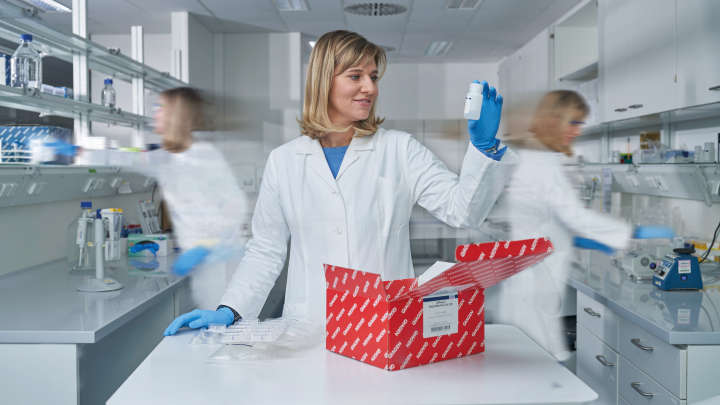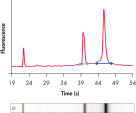✓ 24/7 automatic processing of online orders
✓ Knowledgeable and professional Product & Technical Support
✓ Fast and reliable (re)-ordering
QIAzol Lysis Reagent (200ml)
Cat no. / ID. 79306
✓ 24/7 automatic processing of online orders
✓ Knowledgeable and professional Product & Technical Support
✓ Fast and reliable (re)-ordering
Features
- Optimized lysis conditions to purify RNA for gene expression analysis
- High yields of RNA from fatty tissues
- Easy-to-follow protocol for lysis and homogenization
- Integration with RNeasy cleanup to prevent phenol carryover
- Compatibility with a variety of tissue types
Product Details
QIAzol Lysis Reagent is optimized for lysis of fatty tissues. The standard QIAzol protocol provides an easy-to-follow procedure, combining QIAzol lysis with standard homogenization methods and isopropanol precipitation.
Performance
See figures
Principle
Phenol/guanidine-based QIAzol Lysis Reagent can be used to lyse all classes of tissues but is optimized for lysis of fatty tissues, such as brain and adipose tissues. The combination of organic extraction and chaotropic disruption contributes to efficient lysis and higher yields of total RNA. The organic extraction step removes both proteins and DNA, improving the efficiency of further purification steps, for example, precipitation or spin columns. QIAGEN provides several solutions for efficient RNA purification, which integrate QIAzol lysis and RNeasy silica membrane purification technologies in single, streamlined protocols (e.g., RNeasy Plus Universal Kits for any type of tissue).
Procedure
The standard QIAzol protocol provides an easy-to-follow procedure, combining QIAzol lysis with standard homogenization methods and isopropanol precipitation. Tissue samples are homogenized in QIAzol Lysis Reagent. After addition of chloroform, the homogenate is separated into aqueous and organic phases by centrifugation. RNA partitions to the upper, aqueous phase while DNA partitions to the interphase and proteins to the lower, organic phase. RNA is precipitated from the aqueous phase by addition of isopropanol. The pellet is then washed with ethanol and redissolved in RNase-free water. For high performance in downstream applications, subsequent purification of the RNA is recommended using the RNeasy MinElute Cleanup Kit to remove any contaminating phenol and to concentrate the RNA.
Applications
Phenol/guanidine-based QIAzol Lysis Reagent is suitable for all tissues and is optimized for lysis of fatty tissues, such as brain and adipose tissues. We recommend purification of the RNA product with an RNeasy Plus Universal Kit, or the RNeasy MinElute Cleanup Kit, for high performance in any downstream application.
Supporting data and figures
High-quality RNA.
Total RNA was isolated from 200 mg rat adipose tissue using the RNeasy Lipid Tissue Midi Kit (with QIAzol). The high quality of the RNA is shown by scanning with the Agilent 2100 BioAnalyzer.



